The forests of the United States are not just scenic wonders but also natural pantries filled with edible treasures. For centuries, indigenous peoples relied on these wild foods for sustenance, and today, foraging has experienced a renaissance among outdoor enthusiasts, survivalists, and culinary adventurers. Whether you’re hiking through the Appalachian wilderness or exploring Pacific Northwest woodlands, knowing which plants can provide nourishment could enhance your outdoor experience or even save your life in an emergency. However, proper identification is crucial, as misidentification can lead to serious illness or worse. This guide introduces 12 common edible wild plants found in U.S. forests, along with identification tips and preparation suggestions.
Wild Blackberries (Rubus spp.)
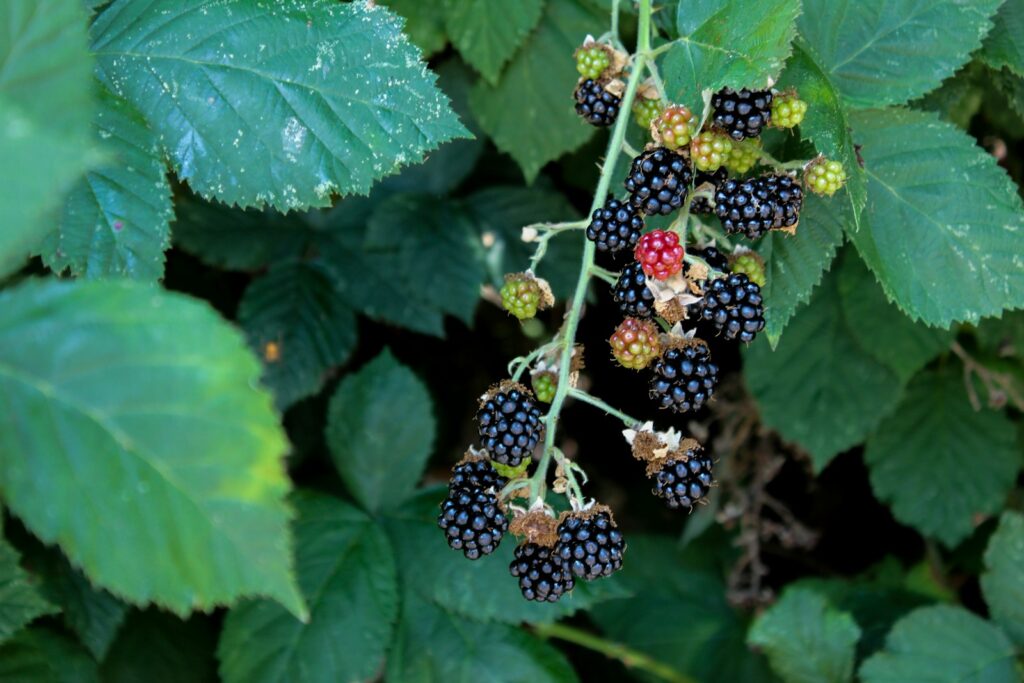
Wild blackberries grow abundantly throughout U.S. forests, offering sweet nutrition from late summer through early fall. These brambles are easily identified by their thorny canes and distinctive compound leaves with serrated edges, typically arranged in groups of three to five leaflets. The berries progress from green to red to deep purple-black when fully ripe, resembling their grocery store counterparts but often smaller and more intensely flavored. Wild blackberries are not only delicious eaten fresh but also pack impressive nutritional value, containing high levels of vitamin C, fiber, and antioxidants that support immune function and digestive health. Before harvesting, ensure you can distinguish them from look-alikes like black raspberries (which have a hollow core when picked) or potentially harmful berries that share similar appearances.
Dandelion (Taraxacum officinale)
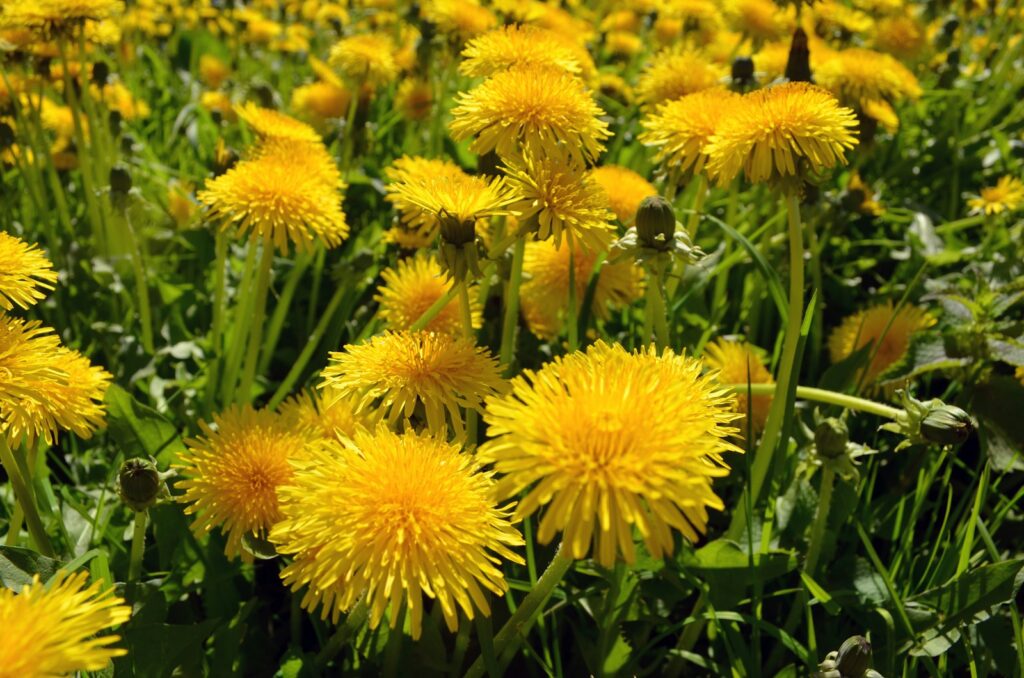
Dandelions are among the most recognizable and versatile wild edibles, growing throughout the United States in forest clearings, meadows, and disturbed areas. Every part of this plant is edible: the young leaves make excellent salad greens, especially before the plant flowers when they’re less bitter; the bright yellow flowers can be battered and fried or made into wine; and the roots can be roasted and ground as a coffee substitute. Nutritionally, dandelions are powerhouses, containing more vitamin A than carrots and significant amounts of vitamins C and K, along with minerals like iron and calcium. Identification is straightforward thanks to their distinctive toothed leaves (the name “dandelion” derives from “dent de lion,” French for “lion’s tooth”), hollow stems that exude a milky sap when broken, and unmistakable yellow flowers that transform into puffy seed heads.
Morel Mushrooms (Morchella spp.)
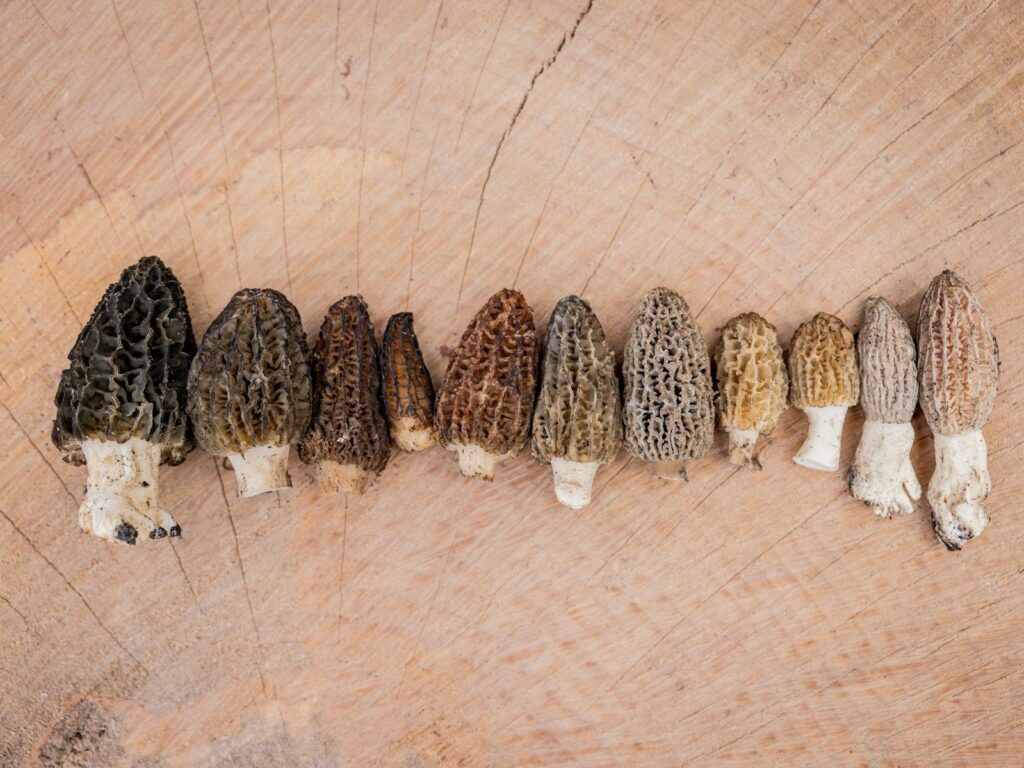
Morel mushrooms are prized forest delicacies that appear briefly each spring, typically after the soil temperature reaches about 50°F. These distinctive fungi are characterized by their conical caps with a honeycomb pattern of ridges and pits, making them unlike any poisonous look-alikes when properly identified. Morels have a hollow stem and cap, which is an important identification feature differentiating them from potentially dangerous false morels. These mushrooms often grow in areas with ash, elm, and apple trees, particularly in forests recovering from fires or disturbance. Nutritionally, morels offer protein, vitamin D, copper, and iron, while their rich, nutty flavor makes them sought after by gourmet chefs and foragers alike. When harvesting morels, use a knife to cut them above the soil level, place them in a mesh bag to allow spores to disperse, and always cook them thoroughly, as they contain compounds that can cause digestive upset when raw.
Ramps (Allium tricoccum)
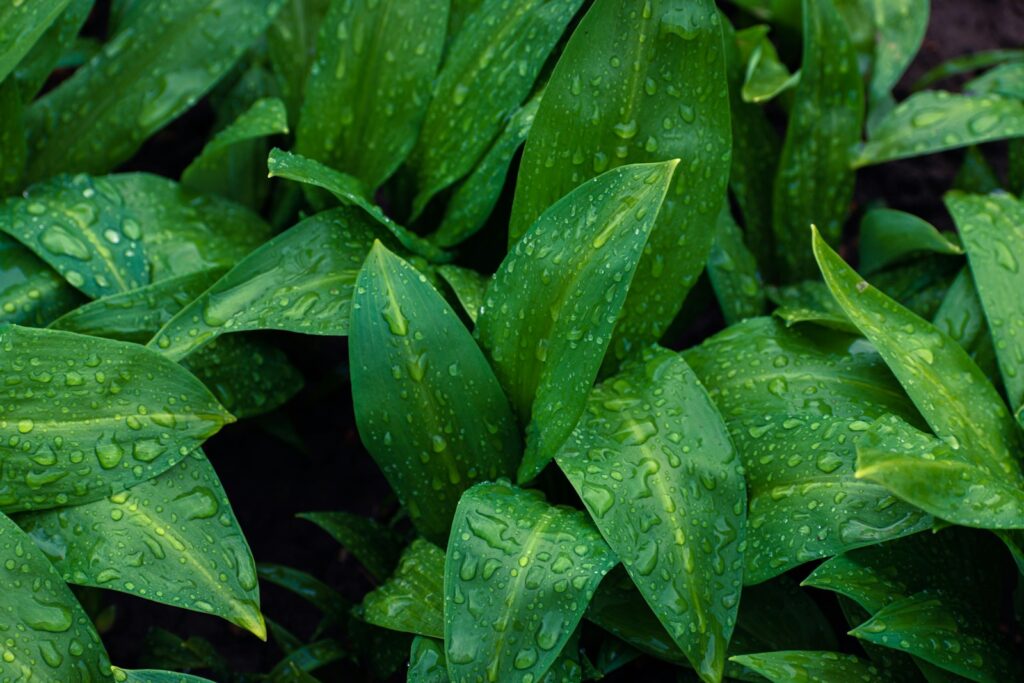
Ramps, also known as wild leeks, are spring ephemeral plants found primarily in the eastern deciduous forests of North America, particularly in the Appalachian region. Identifiable by their smooth, broad, lily-of-the-valley-like leaves and distinctive onion-garlic aroma when crushed, ramps have become increasingly popular in seasonal cuisine. Each plant features two or three leaves emerging from a white bulb that gradually tapers to a purple or burgundy-colored stem where it meets the soil. The flavor profile of ramps is uniquely complex, combining the pungency of garlic with the sweetness of onions, making them versatile ingredients in everything from pesto to pickles. Due to their slow growth cycle—taking up to seven years to reproduce from seed—and surging popularity, ramps have faced overharvesting issues in some regions, so sustainable harvesting practices are essential, such as taking only one leaf per plant and leaving the bulb intact to regrow.
Pawpaw (Asimina triloba)

The pawpaw is North America’s largest native edible fruit, growing on small understory trees in eastern U.S. forests, particularly in river valleys and floodplains. These tropical-looking fruits have a custard-like consistency and a flavor often described as a combination of banana, mango, and vanilla, earning them nicknames like “custard apple” or “Appalachian banana.” Pawpaws can be identified by their large, oblong leaves that turn a striking yellow in autumn, and the fruits themselves grow in clusters, developing from green to yellowish-brown when ripe in late summer to early fall. The fruits contain numerous large, dark seeds that must be removed before eating, but the creamy flesh is rich in nutrients including antioxidants, vitamins A and C, and several essential minerals. Because pawpaws have an extremely short shelf life and bruise easily, they’re rarely found in commercial markets, making foraging one of the few ways to experience this unique native delicacy.
Stinging Nettle (Urtica dioica)
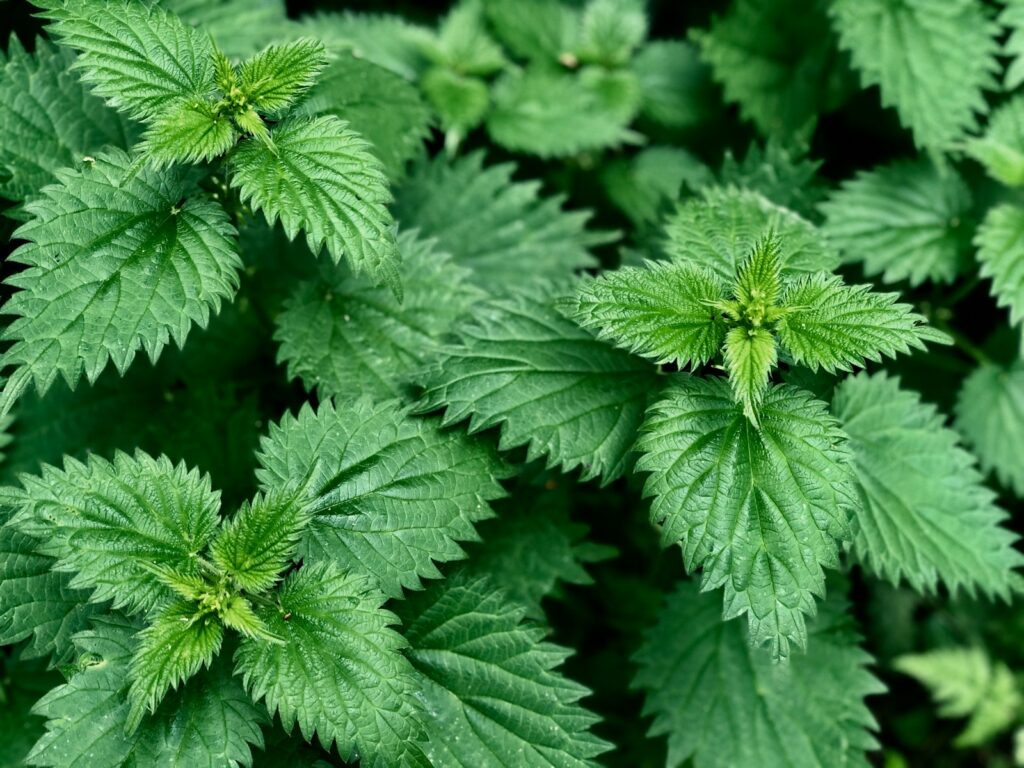
Despite its intimidating name and notorious sting, stinging nettle is one of the most nutritious wild edibles available in U.S. forests, particularly in moist, nitrogen-rich soils and along forest edges. The plant features opposite, heart-shaped leaves with jagged edges and is covered in tiny hollow hairs that inject irritating compounds when touched, causing a temporary burning sensation and rash. When properly harvested with gloves and thoroughly cooked—which neutralizes the sting—nettles offer a flavor similar to spinach but with significantly higher nutritional value, containing more protein than almost any other leafy green along with abundant iron, calcium, magnesium, and vitamins A, C, and K. Spring shoots and young leaves are preferable for eating, becoming increasingly fibrous as the plant matures. Beyond their culinary applications in soups, teas, and sautés, nettles have a long history of medicinal use for treating allergies, arthritis, and urinary issues, making them truly multi-purpose forest plants.
Elderberry (Sambucus spp.)
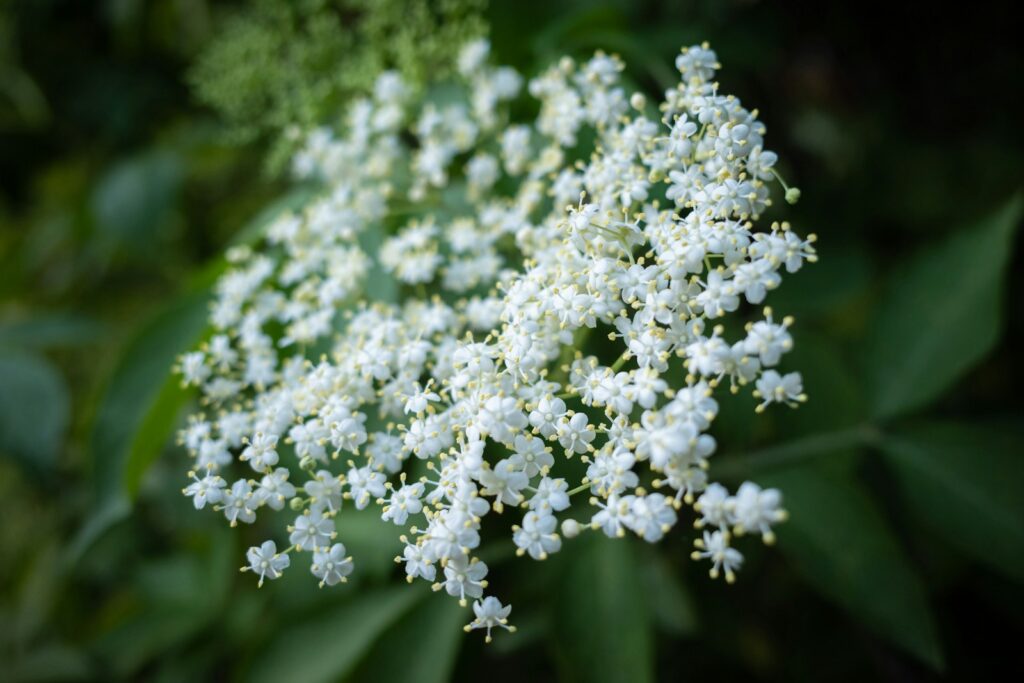
Elderberry shrubs grow throughout North American forests, thriving along forest edges, streams, and in moist clearings where they produce clusters of tiny white flowers in spring followed by dark purple-black berries in late summer. The common elderberry (Sambucus canadensis) in eastern regions and blue elderberry (Sambucus cerulea) in western states both offer edible berries, though it’s crucial to note that while the ripe berries are edible when cooked, other parts of the plant contain cyanide-producing compounds and should be avoided. These berries have been used for generations in syrups, jams, wines, and medicinal preparations, particularly for immune support during cold and flu season due to their high content of vitamin C and antioxidant flavonoids. The distinctive flat-topped or umbrella-shaped flower clusters (called umbels) are also edible and can be dipped in batter and fried as fritters or steeped to make a fragrant, floral tea or cordial with hints of citrus and vanilla.
Chanterelle Mushrooms (Cantharellus spp.)
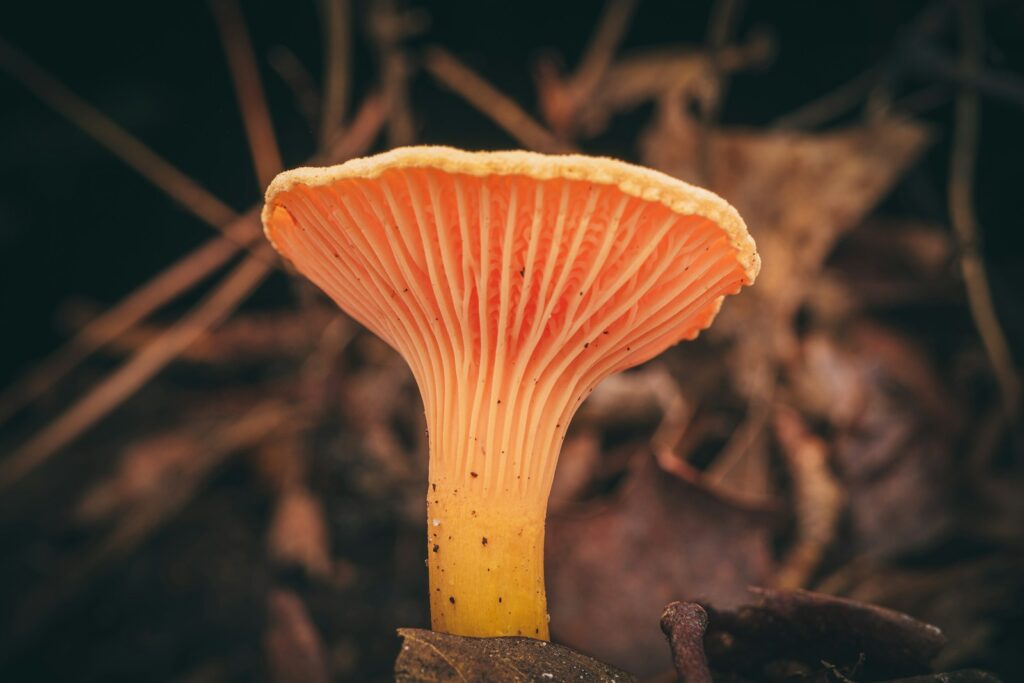
Chanterelle mushrooms are golden treasures of forest floors, particularly abundant in the Pacific Northwest but found in deciduous and coniferous forests across the United States during summer and fall, especially after periods of rain. These funnel-shaped fungi feature wavy caps with distinctive gill-like ridges that run down the stem rather than true gills that separate from the cap, helping distinguish them from the poisonous jack-o’-lantern mushroom. Chanterelles emit a distinctive fruity aroma reminiscent of apricots and have a delicate, slightly peppery flavor that has made them favorites among gourmet chefs. When foraging for chanterelles, it’s important to harvest them by cutting at the base rather than pulling, which can damage the underground mycelium network essential for future fruiting. Nutritionally, these mushrooms provide protein, fiber, vitamins D and B, and various minerals while being naturally low in calories, making them both delicious and nutritious additions to risottos, pasta dishes, or simply sautéed in butter.
Wild Onions and Garlic (Allium spp.)

Various species of wild onions and garlic grow throughout U.S. forests and meadows, providing flavorful additions to foraged meals year-round. These plants can be identified by their characteristic onion or garlic aroma when leaves or bulbs are crushed—a crucial identification feature, as some toxic lilies can look similar but lack this distinctive smell. Most wild alliums feature hollow, cylindrical leaves emerging from small bulbs, with some species producing rounded clusters of flowers in pink, white, or purple hues. The entire plant is generally edible, including the bulbs, leaves, flowers, and even the seeds, though flavor intensity varies by species and season. Wild onions and garlic contain many of the same health-promoting compounds as their cultivated counterparts, including allicin, which has antimicrobial properties and potential cardiovascular benefits. One particularly abundant species, the ramp or wild leek (Allium tricoccum), has already been covered separately due to its distinctive characteristics and cultural significance.
Chickweed (Stellaria media)
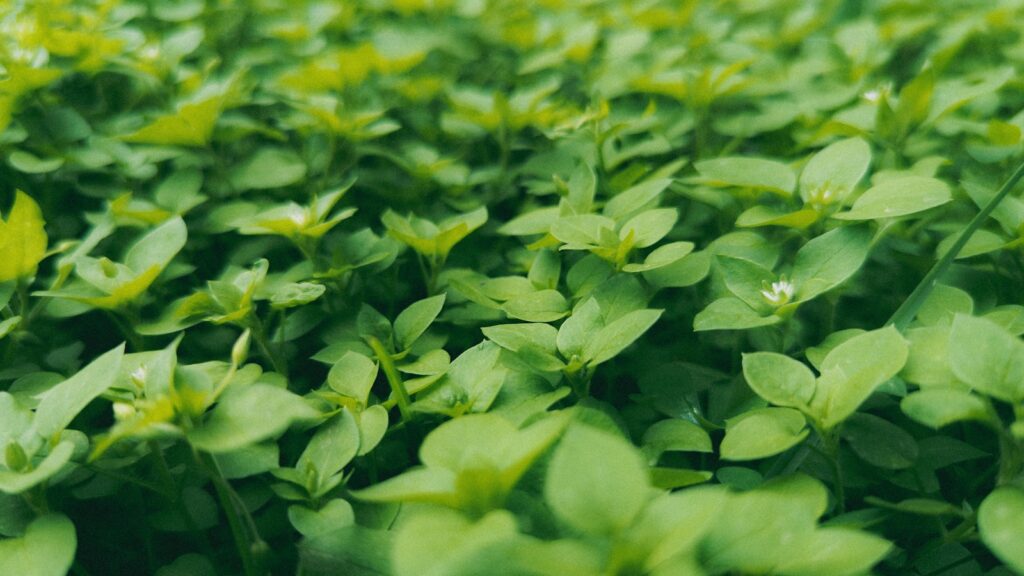
Chickweed is a delicate, star-flowered plant that thrives in moist, partially shaded areas of forests and forest edges throughout most of the United States, often appearing in early spring before many other edibles emerge. This low-growing plant features small, oval leaves arranged in opposite pairs along slender stems with a unique identification feature: a line of tiny hairs that changes sides between leaf pairs, creating a zigzag pattern upon close inspection. The fresh, tender leaves and stems have a mild, sweet flavor reminiscent of corn silk or mild lettuce, making chickweed an excellent addition to spring salads, sandwiches, or as a nutritious garnish. Despite its unassuming appearance, chickweed packs impressive nutritional value, containing significant amounts of vitamins A, C, and B complex, along with minerals like iron, calcium, potassium, and zinc, while historically being used medicinally to treat inflammation, skin conditions, and digestive issues.
Wild Blueberries (Vaccinium spp.)

Wild blueberries grow in acidic forest soils across the United States, with different species thriving in various regions, from the lowbush varieties of the Northeast to the evergreen huckleberries of the Pacific Northwest. These wild cousins of commercial blueberries are smaller but pack substantially more intense flavor and higher antioxidant content than their cultivated counterparts. The plants can be identified by their alternate, oval leaves, bell-shaped flowers ranging from white to pink, and of course, the distinctive blue-black berries with a crown-like structure on the end opposite the stem. Unlike some look-alike berries, true blueberries have a five-pointed “star” pattern visible inside when cut crosswise. Wild blueberries typically ripen from mid-summer through early fall, depending on elevation and region, providing an important food source not only for humans but also for numerous forest animals including bears, birds, and small mammals. These berries can be enjoyed fresh or preserved through freezing, drying, or incorporating into jams and baked goods.
Wood Sorrel (Oxalis spp.)
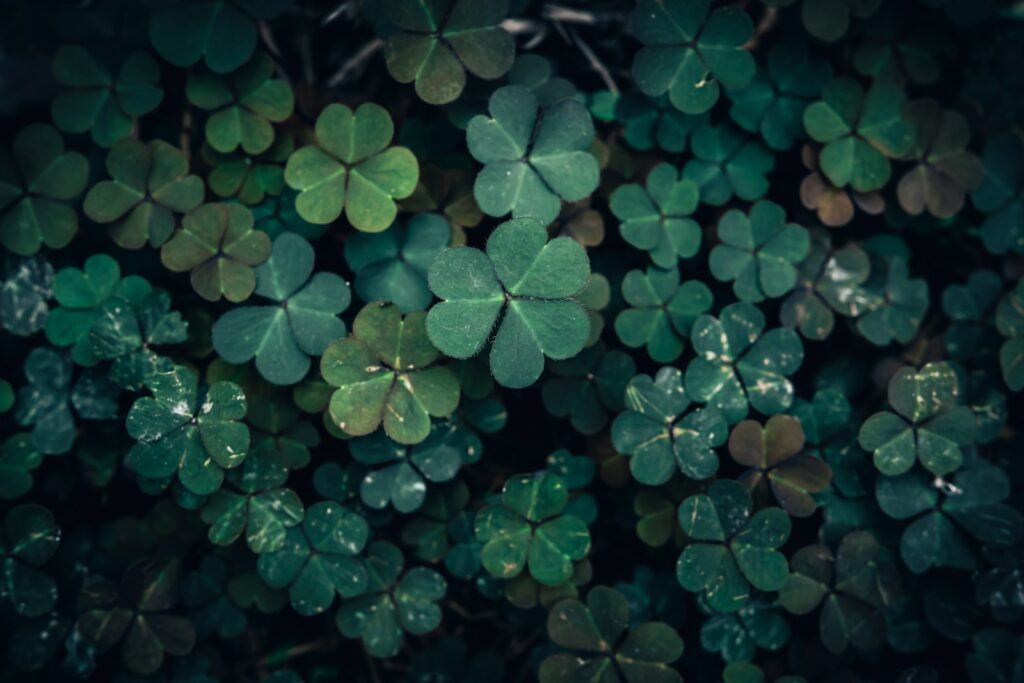
Wood sorrel is a delightful forest find, featuring distinctive heart-shaped leaflets arranged in groups of three that superficially resemble clover but fold along their midlines at night or during stress. This low-growing plant produces dainty five-petaled flowers, typically yellow in the common yellow wood sorrel (Oxalis stricta) found throughout the eastern and central United States, or white to pink in other species. The leaves, stems, and flowers all offer a bright, lemony flavor caused by their oxalic acid content, making them popular additions to salads, sandwiches, and as trail snacks that can help quench thirst. While the pleasantly sour taste makes wood sorrel a refreshing forest nibble, its oxalic acid content means consumption should be moderate, particularly for those with kidney disorders, gout, or rheumatoid arthritis, as this compound can interfere with mineral absorption and contribute to kidney stone formation when consumed in large quantities. For most healthy individuals, however, reasonable amounts of wood sorrel add a delightful citrusy accent to meals without concern.
The forests of America offer a remarkable pantry of edible plants for those with the knowledge to identify and prepare them safely. These 12 edible wild plants represent just a fraction of the botanical bounty available to foragers across the country. As you explore these natural food sources, remember that proper identification is paramount—always use multiple field guides, consult experts when in doubt, and start with small quantities of any new wild food to ensure you don’t have adverse reactions. Sustainable harvesting practices are equally important to ensure these plants remain available for future generations of both humans and wildlife. Whether you’re interested in foraging as a survival skill, a connection to traditional knowledge, or simply a way to enhance your outdoor experiences with unique flavors, the forests stand ready to share their edible treasures with respectful and knowledgeable visitors.\

